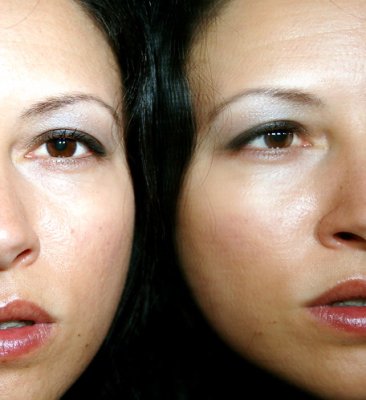Body Dysmorphic Disorder (BDD): What It Is and How to Get Help
Some individuals live with a deeply distressing condition called Body Dysmorphic Disorder (BDD), often suffering in silence.
This is a psychological condition marked by an overwhelming preoccupation with a perceived flaw in one’s physical appearance. In many cases, this flaw is minor or even imagined, but the distress it causes is very real.
What Is Body Dysmorphic Disorder?
People with BDD experience a distorted body image. They focus intensely on perceived defects or inadequacies in their appearance, whether related to body shape, size, or specific features.
Even if others can’t see any flaw, the individual remains convinced the problem is obvious and unacceptable. This can lead to significant emotional distress and to the development of compulsive behaviours or rituals aimed at “fixing” the perceived flaw.

By: orangemania
Common behaviours include:
- Using excessive clothing to cover parts of the body
- Wearing heavy makeup
- Seeking frequent cosmetic procedures
- Excessive grooming, hair plucking, or skin picking
- Avoiding photos or social situations
- Obsessively comparing oneself to others
- Constant mirror checking, or avoiding mirrors altogether
Common areas of concern in BDD include:
- Nose
- Hair
- Skin and complexion
- Wrinkles
- Acne and blemishes
- Breast size
- Muscle size
- Genitalia
However, any part of the body can become the focus of BDD, and the focus may change over time.
Symptoms and Complications of BDD
One of the most painful aspects of BDD is that no amount of reassurance seems to help.
Loved ones can say again and again that the person is not ugly or flawed, but the belief remains firmly in place.
Over time, this can cause a wide range of complications:
- Depression and anxiety
- Obsessive-compulsive behaviours
- Disordered eating
- Addictions
- Unnecessary cosmetic surgery
- Strained romantic relationships
- Difficulties at work and in social life
- In severe cases, suicidal thoughts or behaviours
Because the distress is so intense, early treatment is vital and potentially life-saving.
Who Is at Risk of BDD?
BDD affects both men and women, almost equally. It often begins in adolescence, though it can start as early as childhood. Without treatment, the condition tends to persist into adulthood and may worsen over time.
Many people with BDD feel deep shame about their concerns, which means the condition often goes undiagnosed and untreated. But BDD is not a personal failing or weakness, it is a serious mental health condition that requires professional support.
What Causes BDD?
We don’t yet fully understand what causes BDD, but research suggests that a combination of biological, psychological, and environmental factors may be involved.
Possible risk factors include:
- A family history of BDD or related mental health conditions
- Childhood bullying or teasing
- Low self-esteem
- Cultural or media-driven pressure around appearance and beauty standards
- Existing mental health challenges (such as anxiety or depression)

By: Violetta Raine
How Is BDD Treated?
BDD can be difficult to diagnose, as many people hide their symptoms out of shame or embarrassment.
If any of the issues described here sound familiar, reaching out to a trained mental health professional is an important first step.
A psychotherapist, psychologist, or psychiatrist can carry out a psychological assessment to help ensure an accurate diagnosis and a personalised treatment plan.
Evidence-based treatments for BDD include:
Cognitive Behavioural Therapy (CBT)
CBT is one of the most effective treatments for BDD. It helps individuals:
- Understand how negative thought patterns develop and are maintained
- Challenge distorted beliefs about appearance
- Reduce compulsive behaviours and avoidance
- Build healthier coping strategies and improve self-esteem
Medication
In some cases, Selective Serotonin Reuptake Inhibitors (SSRIs), a type of antidepressant, may be recommended. These can help reduce obsessive thoughts and compulsive behaviours when used alongside therapy.
Combination treatment (using both CBT and medication) has been shown to be particularly effective for many individuals.
Getting Help
BDD can feel isolating – but it’s important to know that effective help is available. With the right support, people with BDD can reduce their symptoms, improve their quality of life, and regain a more balanced and compassionate view of themselves.
If you’re struggling with body image concerns or think you may have BDD, consider reaching out to a qualified mental health professional. Early intervention makes a real difference.
If you or someone you know is struggling with Body Dysmorphic Disorder, you don’t have to face it alone. The experienced team of psychotherapists and psychologists at Harley Therapy can help you explore treatment options and begin the path to recovery.
Originally by Justin Duwe, Psychotherapist. Updated 10th June 2025.




